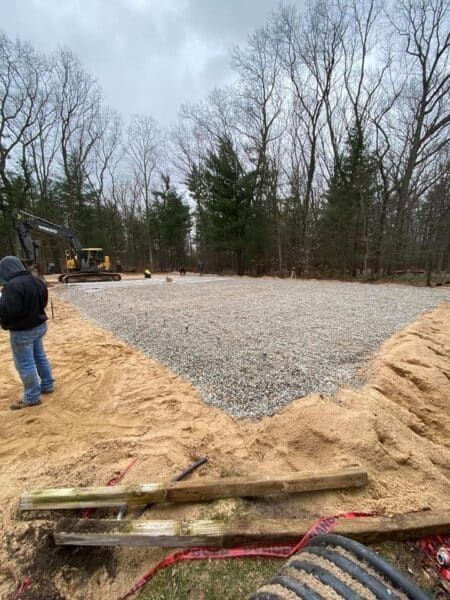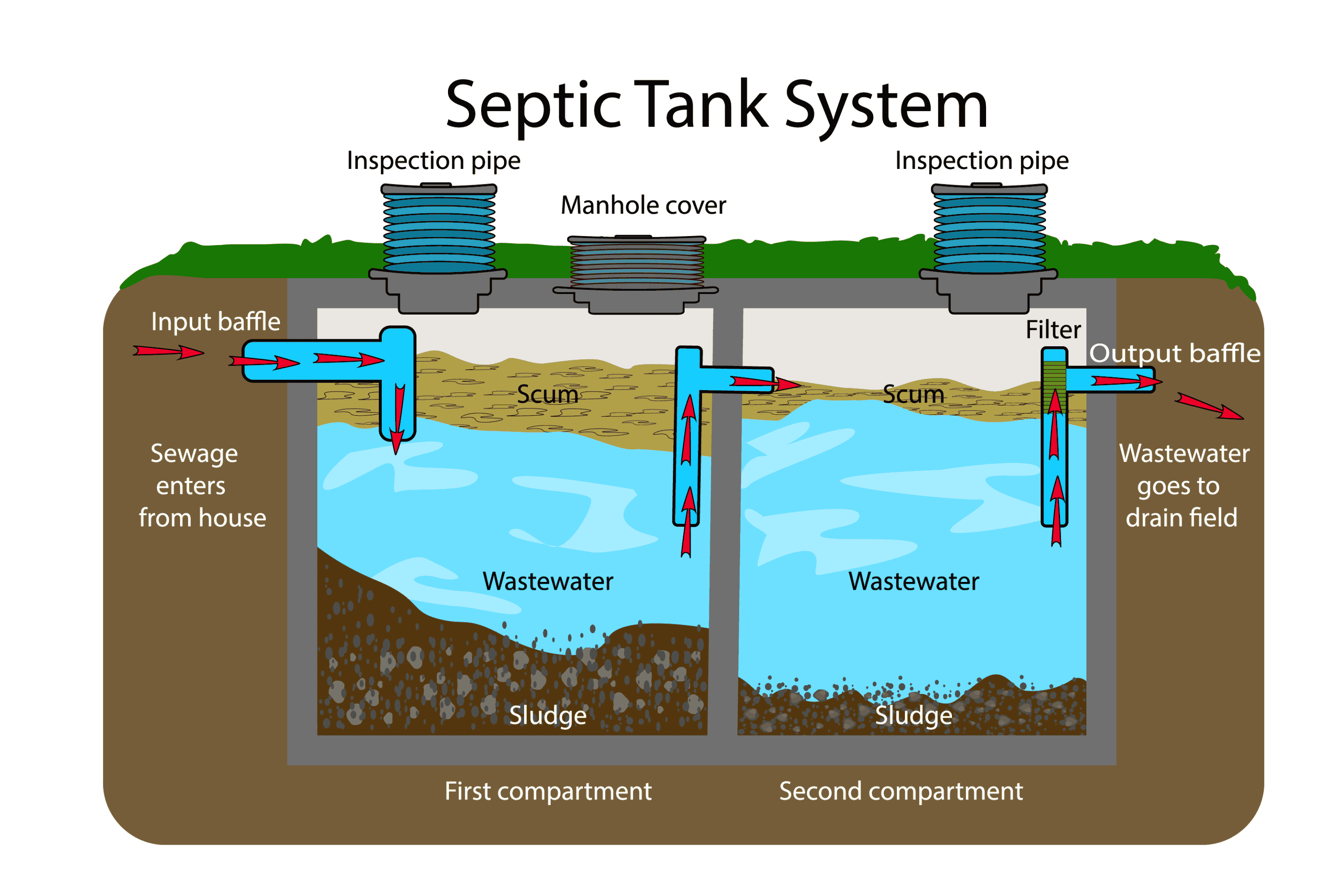Let’s explore what a septic system is and how it works. The earliest humans dropped their waste directly onto the soil around them. There the bacteria in the soil digested the waste and returned the nutrients back to the vegetation. But when we started living in cities, this did not work. So privies came into being. The direct human excrement went into holes in the ground, and when they filled up, they were buried, and a new one was dug. When plumbing was developed, so people had a water supply in the house, the toilet was invented to use the water to wash the excrement away from the house. At first, this just went to a large pit. This was improved by creating a box underground that had an open bottom so it could leach away. But these would clog pretty quickly with the slimy liquid. In the 1800s, Jean Mouras designed the first septic tank, which received the waste and held the solids while the liquid then went to a leach pit and then finally, the leach pit was extended, so it was a long trench filled with gravel to disperse the liquid better.
While this technology seems primitive, it works quite well. The septic tank allows slow digestion of the solids and creates zones where the heavier solids sink to the bottom, and the more active material floats to the top because of gas given off in digestion. The cleaner water in the center depth is discharged to the soil. The tank was made more effective by adding a baffle wall that created an inlet chamber and an outlet chamber. This allowed further clarification and better digestion and prevented solid particles from going out to clog the pipes in the leach disposal field.

This leachfield is the ultimate “treatment” part of a septic system. Organic digestion is seriously limited when no oxygen is available. So even if bacteria are present, they can only partially digest organic carbon. A leach field is typically a trough in the soil that is filled with about 18-24″ of drain rock and then covered with about 2 feet of soil. This keeps potential disease-causing organisms underground and away from people. The liquid from the tank is dispersed with a perforated pipe sitting on the gravel. The void space in the gravel allows the water to quickly leave the tank and then be held for a longer time, so it slowly percolates out into the surrounding soil. In the surrounding soil, bacteria and oxygen will be in the spaces between the grains. These bacteria can use the oxygen in the air spaces to digest organic carbon to CO2. CO2 is a gas that can escape into the atmosphere, leaving behind clean water that can keep percolating down to the aquifer. These soil grains also filter out potential pathogenic bacteria and viruses as they pass through, protecting a homeowner’s well water.
But consider this technology was developed when homes were widely spaced, and the population was lower. A home needed to have well-drained soil, and it had to be in areas that did not have high groundwater. As the population increased, the optimal properties were the first to be developed. Over time these prime properties started to run out, and the neighborhoods with septics got more populous, and lots got smaller. Now we are seeing groundwater under these denser communities start to be degraded by the nutrients from too many septic fields. We have overstepped the capacity of a conventional septic system for protecting our environment.






